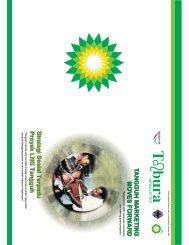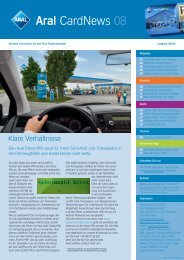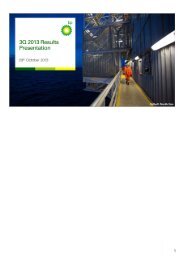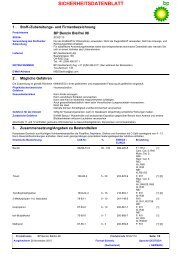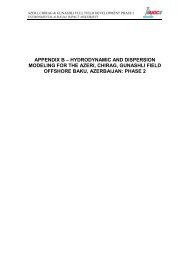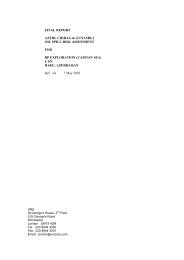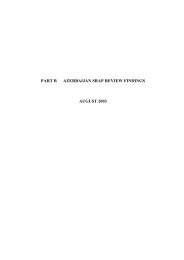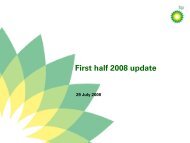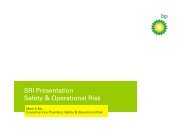Don Field Decommissioning Programme (pdf, 7.8MB) null - BP
Don Field Decommissioning Programme (pdf, 7.8MB) null - BP
Don Field Decommissioning Programme (pdf, 7.8MB) null - BP
Create successful ePaper yourself
Turn your PDF publications into a flip-book with our unique Google optimized e-Paper software.
<strong>Don</strong> <strong>Field</strong> <strong>Decommissioning</strong> <strong>Programme</strong>DON-<strong>BP</strong>-001The planktonic assemblage in the region of the <strong>Don</strong> area is mainly made up northernintermediate (mixed water) and neritic (coastal water) species. The dominantphytoplankton species in the North Sea is the dinoflagellate Ceratia, while zooplankton isdominated by the copepods Calanus finmarchicus and C. helgolandicus.The <strong>Don</strong> <strong>Field</strong> lies within spawning grounds for haddock (February-May), saithe(January-April), mackerel (June-July), and Norway pout (January-April). Haddock,mackerel, sand eel, and blue whiting also use the area as a nursery ground. Althoughthere is fish spawning and nursery activity in the vicinity of the <strong>Don</strong> <strong>Field</strong> at certain timesof the year, these form part of larger offshore areas.Within the vicinity of the <strong>Don</strong> area, seabird densities are low overall, with fulmar andguillemot being the most abundant species. The vulnerability of seabird species tosurface pollution shows that the <strong>Don</strong> area does not exhibit very high seabird vulnerabilityat any time during the year, with only July showing high vulnerability when seabirdsmove offshore from coastal breeding areas.The most abundant cetacean in the <strong>Don</strong> area is the harbour porpoise. However, thisspecies appears to be widespread across the northern and central North Sea with moreimportant populations found outside the <strong>Don</strong> area.In view of the distribution of common and grey seals, it is not expected that these wouldbe encountered in the <strong>Don</strong> area, although these animals have been sighted up to150km offshore.4.3 Commercial Fisheries and other Sea UsersThe <strong>Don</strong> <strong>Field</strong> lies in an area of high commercial value with fishing effort occurringaround the year, with demersal species dominating the landings from this area.The northern North Sea is an area of extensive offshore oil and gas activity, with theclosest fields being Magnus (<strong>BP</strong>), Thistle (Lundin) and Murchison (CNR).Shipping activity in the area is primarily associated with oil and gas support vessels,tankers and merchant vessels.No designated submarine exercise grounds or known areas of military activity lie in thevicinity of the <strong>Don</strong> <strong>Field</strong>.4.4 Conservation InterestsThere are no known habitats or species of conservation importance in close proximity tothe <strong>Don</strong> <strong>Field</strong>. The closest offshore draft Special Area of Conservation (dSAC) to the <strong>Don</strong><strong>Field</strong> is the Braemar pockmark, approximately 280km to the south.Environmental Impact AssessmentMay 2011 9-3



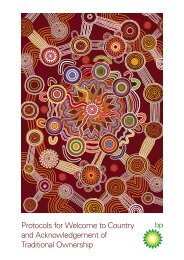
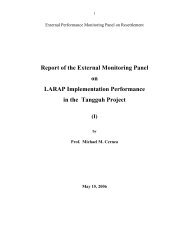
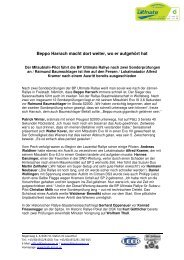
![[PDF] Deepwater Horizon: Accident Investigation Report - BP](https://img.yumpu.com/51697031/1/190x245/pdf-deepwater-horizon-accident-investigation-report-bp.jpg?quality=85)
